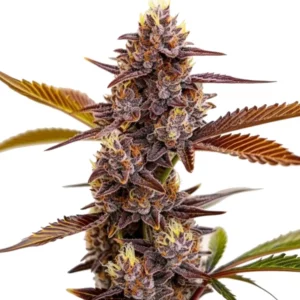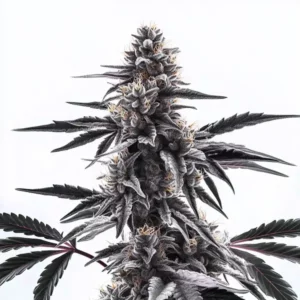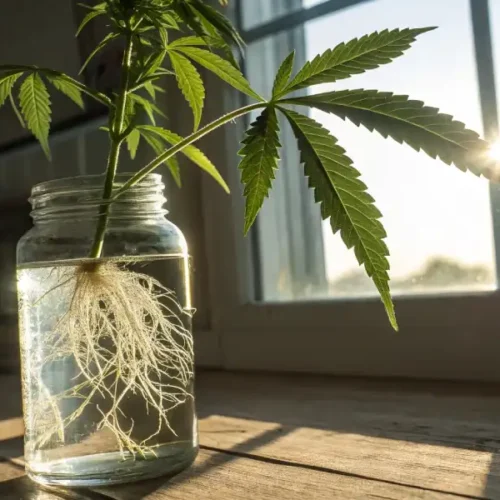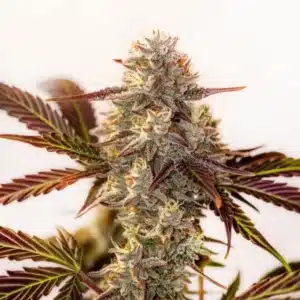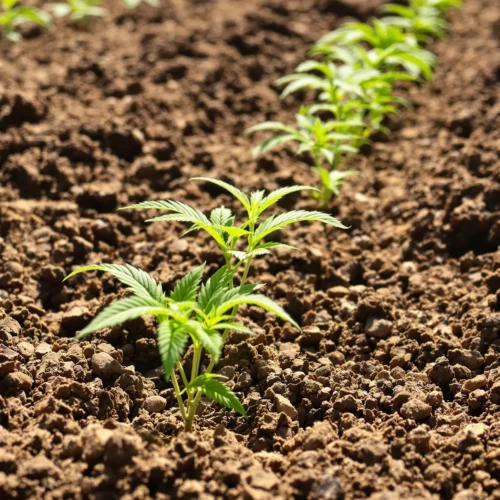Greenhouse vs indoor weed, choosing cultivation is crucial for growing top-quality cannabis. Both methods have distinct advantages and challenges. Your choice will depend on factors like budget, climate, and specific goals. This article explores the key differences between these methods, including costs, environmental impact, and how each affects cannabis quality and potency.
Greenhouse vs. Indoor Weed: Which is Better?
Key Differences Between Greenhouse and Indoor Cultivation
Greenhouse and indoor weed cultivation operate under very different conditions. Greenhouse growing uses natural sunlight, sometimes supplemented with artificial lighting. Indoor cultivation, however, relies entirely on artificial light. This fundamental difference affects the plants’ growth cycles and the overall cost of production.
Greenhouses harness sunlight, providing the full spectrum of light plants need for growth. This can lead to robust plants with stronger terpene profiles. However, greenhouses are more exposed to temperature fluctuations and pests, making control more challenging than in indoor environments.
Indoor cultivation, by contrast, offers complete environmental control. You can manage light, temperature, humidity, and CO2 levels with precision. This control can result in consistently high-quality yields, but it comes at a higher operational cost due to the need for specialized equipment and increased energy use.
Cost Implications: Greenhouse vs. Indoor Growing
Cost is a significant factor when choosing between these cultivation methods. Greenhouses usually have lower initial costs because they utilize sunlight, reducing the need for expensive lighting. Additionally, operating costs are generally lower in greenhouses since they save on electricity, which is a major expense in indoor growing.
However, greenhouses are not without costs. Depending on your location, you might need to invest in climate control systems. Pests and diseases are more common in greenhouses, which can increase pest control costs.
Indoor growing, while more expensive, offers predictability and consistency. In the context of greenhouse vs indoor potency, the ability to fine-tune every variable often gives indoor setups an edge. This can lead to higher yields and potentially higher profits. However, the upfront investment in lights, HVAC systems, and insulation can be substantial. The ongoing energy costs are another significant consideration.
Environmental Impact: Greenhouse vs. Indoor Weed
Sustainability is important in cannabis cultivation. The environmental impact of greenhouse vs indoor weed cultivation is a critical consideration. Greenhouses, which use natural sunlight, are generally more environmentally friendly. They require less energy to produce the same yield compared to indoor grows.
Indoor cultivation has a larger carbon footprint due to its high energy consumption. Constant lighting, heating, cooling, and ventilation require significant energy. This impact is greater if the energy comes from non-renewable sources. Indoor growing can be more sustainable by using energy-efficient equipment and renewable energy sources like solar or wind power.
Quality and Potency: How Each Method Compares
Both greenhouse and indoor cultivation methods can produce high-quality cannabis. However, growing conditions significantly influence the final product. Greenhouse-grown cannabis benefits from natural sunlight, which can enhance terpene production and result in more aromatic buds.
Indoor cannabis, with its controlled environment, often produces consistently high-quality buds with higher THC levels. This is one of the key aspects when comparing greenhouse vs indoor potency, as indoor setups allow growers to maximize THC levels. The ability to fine-tune the growing environment allows indoor growers to maximize the plant’s potential. However, this control can sometimes lead to buds that lack the complexity of flavor found in sun-grown cannabis.
Promos & Deals
Pros and Cons of Greenhouse Weed

Advantages of Growing Weed in a Greenhouse
Growing cannabis in a greenhouse offers several benefits. One major advantage is reduced energy costs. By using sunlight, you can lower reliance on artificial lighting, which is a significant expense in cannabis cultivation.
Another advantage is the potential for large yields with relatively low overhead costs. Greenhouses can be scaled up more easily than indoor facilities. This makes them ideal for commercial growers looking to maximize production. The use of natural light often results in plants with a richer terpene profile, offering a more complex aroma and flavor.
Greenhouses also protect against extreme weather, allowing for a longer growing season. This means multiple harvests per year, significantly increasing your annual yield without the high costs associated with indoor growing.
Challenges and Limitations of Greenhouse Cultivation
While greenhouses offer many benefits, they also come with challenges. One major limitation is the level of control over the growing environment. Unlike indoor cultivation, greenhouses are subject to external weather conditions. Sudden temperature changes, storms, or pests can impact your crop and lead to losses.
Pest management is another challenge. The semi-open environment of a greenhouse makes it more susceptible to pests and diseases than indoor grows. This means you’ll need more robust pest management strategies, which can increase costs.
Additionally, greenhouses are less efficient in maintaining consistent temperature and humidity levels. This can lead to variability in plant growth and bud quality, especially in regions with extreme weather.
Seasonal Control and Harvest Frequency in Greenhouses
One of the key advantages of greenhouse cultivation is the ability to extend the growing season. By using light deprivation techniques, you can manipulate light cycles in a greenhouse to induce flowering any time of year. This allows for multiple harvests, similar to indoor growing, but with lower energy costs.
However, success depends on your location and climate. In regions with mild winters and long growing seasons, greenhouses can be very productive, allowing for year-round cultivation. In areas with harsh winters, maintaining optimal growing conditions during colder months can be challenging, even in a greenhouse.
Pros and Cons of Indoor Weed

Benefits of Indoor Cannabis Cultivation
Indoor cannabis cultivation offers several advantages. The most significant is complete control over the growing environment. Indoors, you can precisely manage light, temperature, humidity, and CO2 levels, creating ideal conditions for growth. This control leads to consistently high-quality yields with dense, potent buds.
Another advantage is the ability to grow year-round, regardless of weather. Indoor setups are not affected by seasonal changes, allowing for continuous production and predictable harvests. This predictability is valuable for commercial growers who need to meet consistent demand.
Indoor cultivation also provides better protection from pests and diseases. The closed environment reduces the risk of infestations, allowing for a cleaner grow and less need for chemical interventions. This results in a purer final product, which is important in markets that prioritize organic and pesticide-free cannabis.
Challenges and Costs Associated with Indoor Growing
Despite its advantages, indoor cannabis cultivation comes with significant challenges, primarily related to cost and resource management. The initial investment in an indoor grow operation is substantial. It requires the purchase of high-quality lighting systems, HVAC units, dehumidifiers, and other essential equipment. These costs can be prohibitive for small-scale or novice growers.
In addition to the high upfront costs, indoor growing is energy-intensive. The need to power lights, climate control systems, and ventilation 24/7 leads to high electricity bills. This energy consumption not only affects your bottom line but also has a larger environmental impact, which is a growing concern for both consumers and regulators.
Indoor cultivation also requires meticulous attention to detail and constant monitoring. Any lapse in environmental control can quickly lead to issues such as mold, mildew, or nutrient imbalances, which can devastate your crop. This level of precision and care demands a higher level of expertise, making indoor growing more challenging for beginners.
Maximizing Quality and Yield in Indoor Grows
To maximize quality and yield in indoor grows, it’s crucial to optimize every aspect of the growing environment. This begins with choosing the right strain, as some strains are better suited to indoor conditions. Indica-dominant strains, for example, often thrive in the controlled environment of an indoor grow room due to their shorter stature and denser buds.
Lighting is another critical factor. High-Intensity Discharge (HID) lights, such as Metal Halide (MH) and High-Pressure Sodium (HPS) lights, have long been the standard in indoor cannabis cultivation. However, Light Emitting Diode (LED) technology has advanced significantly and now offers energy-efficient options that can match or even surpass the performance of traditional lighting systems.
Maintaining optimal environmental conditions is key to achieving maximum yields. This includes controlling temperature and humidity, ensuring proper ventilation, and monitoring CO2 levels. Nutrient management is also essential, as indoor plants have specific feeding requirements that differ from outdoor or greenhouse-grown cannabis. By fine-tuning these variables, indoor growers can produce cannabis that rivals the best sun-grown varieties in both quality and potency.

Making the Right Choice: Greenhouse or Indoor Weed?
Factors to Consider When Choosing Your Cultivation Method
Choosing between greenhouse and indoor weed cultivation depends on several factors, including your budget, location, and specific cultivation goals. If you’re operating on a limited budget, a greenhouse may offer the most cost-effective solution, allowing you to utilize natural sunlight and reduce energy costs. However, if you’re looking for maximum control over the growing environment and can afford the higher operational costs, indoor cultivation may be the better choice.
Your location also plays a significant role in this decision. In areas with mild, predictable climates, greenhouses can be incredibly productive and cost-efficient. In contrast, regions with extreme weather conditions may necessitate the complete environmental control offered by indoor growing.
Your cultivation goals are another crucial consideration. If your primary focus is on producing large quantities of cannabis with minimal operational costs, greenhouses are the way to go. However, if your goal is to produce the highest-quality cannabis possible, with consistent results and the ability to tailor every aspect of the growing environment, indoor cultivation offers unmatched advantages.
Greenhouse vs Indoor Weed: Balancing Quality, Cost, and Sustainability
When weighing greenhouse vs indoor weed cultivation, it’s essential to balance quality, cost, and sustainability. Greenhouse cultivation is often more sustainable due to its lower energy consumption, making it a more environmentally friendly option. However, this sustainability can come at the cost of reduced control over the growing environment, which may affect the quality of the final product.
Indoor cultivation, while more energy-intensive, offers the potential for superior quality and consistency. By controlling every aspect of the environment, indoor growers can produce cannabis that meets the highest standards of potency, flavor, and aroma. When debating greenhouse vs indoor potency, indoor cultivation often leads due to precise adjustments in growth conditions. However, this comes with higher operational costs and a larger carbon footprint, which are important factors to consider in today’s market.
Ultimately, the best choice depends on your priorities. If you value sustainability and lower costs, a greenhouse setup might be your best bet. But if you’re focused on producing top-tier cannabis with consistent quality, the investment in indoor growing could pay off in the long run.
Long-Term Benefits of Each Growing Method
Both greenhouse and indoor weed cultivation offer long-term benefits, but these vary depending on your goals and resources. Greenhouse cultivation provides the advantage of scalability. As your operation grows, expanding a greenhouse is often easier and more cost-effective than expanding an indoor facility. The reliance on natural sunlight also means lower energy costs over time, which can significantly impact your profit margins.
Indoor cultivation, on the other hand, offers unparalleled consistency and control. Over the long term, this can lead to a strong reputation for quality, which can command higher prices in the market. Additionally, indoor growing allows for continuous production cycles, ensuring a steady supply of cannabis regardless of external weather conditions.
Both methods also offer opportunities for innovation. In greenhouses, advancements in light deprivation and climate control technologies can further enhance productivity and quality. In indoor growing, the adoption of energy-efficient technologies and renewable energy sources can reduce costs and environmental impact, making it a more sustainable option in the future.
FAQs: Greenhouse vs. Indoor Weed
What are the main differences between greenhouse and indoor weed cultivation?
The primary difference lies in environmental control. Greenhouse cultivation uses natural sunlight and has semi-controlled conditions, while indoor growing relies entirely on artificial light and offers complete control over all environmental factors such as temperature, humidity, and CO2 levels. These differences affect everything from cost and sustainability to the quality and consistency of the final product.
Which method is more cost-effective: greenhouse or indoor growing?
Greenhouse cultivation is generally more cost-effective due to lower initial setup costs and reduced energy expenses since it utilizes natural sunlight. However, indoor growing offers greater control, which can lead to higher quality yields, potentially offsetting the higher operational costs with premium pricing.
Is the quality of cannabis better in a greenhouse or indoor setup?
Both methods can produce high-quality cannabis, but indoor growing often results in more consistent and potent buds due to the precise control over environmental factors. Greenhouse-grown cannabis benefits from the full spectrum of natural sunlight, which can enhance terpene profiles and create more complex aromas and flavors.
Which method has a lower environmental impact: greenhouse or indoor cultivation?
Greenhouse setups typically have a lower environmental impact because they use natural sunlight, reducing the need for energy-intensive lighting and climate control systems. Indoor growing, on the other hand, consumes more energy, especially if the power comes from non-renewable sources. However, sustainable practices, such as using energy-efficient equipment and renewable energy, can mitigate this impact.
Can I grow cannabis year-round in a greenhouse?
Yes, with the use of light deprivation techniques, you can extend the growing season in a greenhouse and even achieve multiple harvests per year. However, this depends on the climate in your region. In areas with harsh winters, maintaining optimal conditions during the colder months can be challenging, even in a greenhouse.
What are the common challenges in greenhouse cultivation?
Some of the main challenges include dealing with external weather conditions, managing pests and diseases, and maintaining consistent temperature and humidity levels. Greenhouses are more susceptible to these challenges than indoor grows, which offer complete environmental control.
What are the benefits of indoor cannabis cultivation?
The primary benefits of indoor cannabis cultivation include complete control over the growing environment, the ability to produce cannabis year-round, and better protection from pests and diseases. This results in consistently high-quality buds that can command premium prices in the market.
How do I decide between greenhouse and indoor cultivation?
Your decision should be based on factors such as budget, location, and cultivation goals. If you have a limited budget and are in a favorable climate, a greenhouse might be the better option. However, if your priority is producing top-tier cannabis with consistent quality and you can afford the higher operational costs, indoor cultivation may be the best choice.
Is greenhouse cannabis as potent as indoor cannabis?
Greenhouse cannabis can be just as potent as indoor cannabis, but it often depends on the strain and growing conditions. Indoor growing allows for precise control over every aspect of the environment, which can enhance potency. However, the natural sunlight in a greenhouse can also contribute to robust terpene production, leading to a more balanced and complex product.
Can I combine both greenhouse and indoor cultivation methods?
Yes, some growers use a hybrid approach, where plants are started indoors and then moved to a greenhouse for the flowering stage. This method combines the benefits of both environments, such as the controlled conditions of indoor growing and the natural light of a greenhouse. It can optimize growth and yield while managing costs and energy use.


